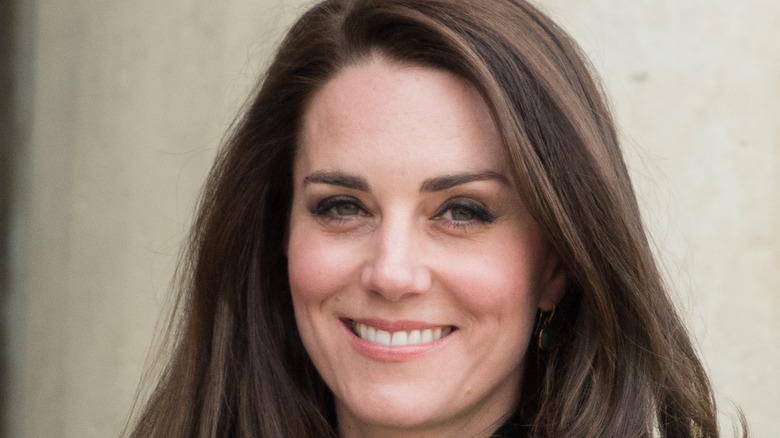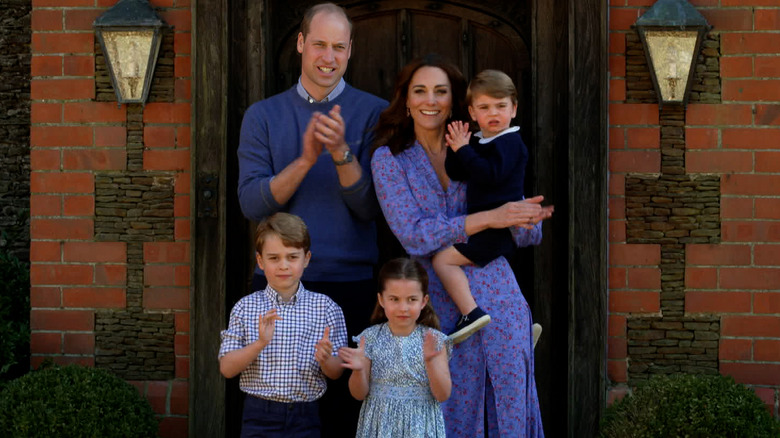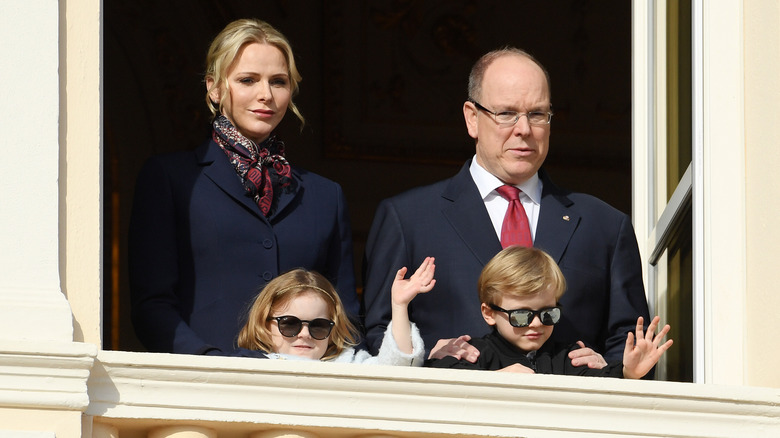If Kate Middleton's First Pregnancy Had Been Twins, Who Would Assume The Throne?
On July 22, 2013, Prince George of the United Kingdom was born to his parents, the Duke and Duchess of Cambridge (Prince William and Kate Middleton), and became the youngest member of the direct line of succession. In the months before his birth, there had been numerous rumors about the pregnancy, including speculation about the baby's gender and the whisper that Kate Middleton (above) was expecting twins. Here's what would have happened had that last rumor had actually been true.
The protocol would have depended greatly on what genders the twins would have been. If they had both been boys, the older would be first in line to the throne. The older would also have been first in the line succession had they both been girls. If the scenario was a set of fraternal twins, with one boy and one girl, the answer gets a bit more tricky.
Before October 28, 2011, the answer would have been that the boy would be first in line, even if he were the younger of the siblings. However, when the Duke and Duchess of Cambridge announced they were expecting, Parliament scrambled to pass a law to ensure that the first born — whether a boy or a girl — would be able to assume the throne.
Girl Power? Maybe not so much
The bill, titled the Succession of the Crown Act, received royal assent on April 13, 2013, per the UK's official legislative website. That was a few months before Prince George was born. However, the United Kingdom shares its monarchy with 15 other countries in the Commonwealth, and six of those nations argued that they had to vote and legislate the bill independently. Those six realms were Australia, Barbados, Canada, New Zealand, St. Kitts and Nevis, and St. Vincent and the Grenadines (via Constitution Unit). Had those members of the Commonwealth chosen to veto the bill, a first-born girl would have been in the odd position of being heir to the United Kingdom while her younger brother would have been heir in the countries that favored male primogeniture.
Fortunately, the law did pass in all countries — but not until 2015, nearly two full years after Prince George was born. A provision ensured that it applied retroactively to all children born after October 2011. "The idea that a younger son should become monarch instead of an elder daughter simply because he is a man ... is at odds with the modern countries that we have become," noted David Cameron, who was serving as the prime minister of the United Kingdom at the time (via the BBC).
Princess Charlene of Monaco gave birth to twins -- and here's what happened
While the twins scenario remains a fun hypothetical for British royal watchers, it actually did happen in Monaco, a small principality located by the coast of France. On December 10, 2014, Prince Albert of Monaco and Princess Charlene welcomed twins Jacques and Gabriella, the first direct heirs to the Monaco monarchy.
According to the South China Morning Post, Gabriella was born two minutes before her brother. However, because Monaco's succession laws still favor males over females, Jacques is first line to the throne, even though he is younger than his sister. The decision to keep with the traditional succession laws did raise some eyebrows at the time, with The Irish Mail calling the move "outdated and sexist." Defenders, however, argued that traditions should be valued, especially in an institution like a monarchy.
The line of succession laws can always be changed. That's exactly what happened with the royal family in Sweden. In 1980, the Swedish Parliament passed a law that ended the tradition of prioritizing males to instead rely on the natural birth order, per Yahoo. This law actually upset the line of succession at the time, as current Crown Princess Victoria was moved to be first in line to the throne instead of her younger brother, Prince Carl Philip.


